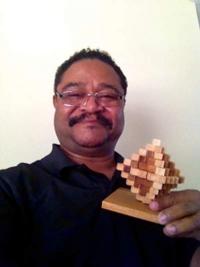The Software Developer
Spring
2014
Spotlight on Hidden Physicists
The Software Developer
Michael McNeary, Scientific Software Consultant, McNeary & Associates
 Born in the early 1950s in Southern California, I was a surfer in high school and worked as a draftsman in the evenings and on weekends. After graduating from Los Angeles High School, I enrolled in the engineering program at Wayne State University in Detroit, Michigan, but quickly found out how ill prepared I was for even the most basic math courses. I left college.
Born in the early 1950s in Southern California, I was a surfer in high school and worked as a draftsman in the evenings and on weekends. After graduating from Los Angeles High School, I enrolled in the engineering program at Wayne State University in Detroit, Michigan, but quickly found out how ill prepared I was for even the most basic math courses. I left college.
Two years after returning to my home state, I completed an associate degree at El Camino College Compton Center, where I passed all of the math and physics courses the school offered. This gave me the opportunity to participate in a pre-engineering program run by the Lockheed Corporation in Burbank, California, in which I reviewed specifications for microelectronic devices. I then enlisted in the US Air Force (USAF), becoming a mechanic and serving one tour of duty.
Working at the aircraft company McDonnell Douglas after my time in the USAF, I prepared electrical wire harness assemblies. It was there that I remembered how much I had enjoyed physics. So I applied and was accepted to California State University, Dominguez Hills, where I earned a bachelor’s degree in physics. After graduating I worked for a number of years in the fields of acoustics and vibration before being accepted to the physics masters program at California State University, Long Beach.
As I worked toward that degree, the hands-on nature of experimental physics was very appealing and led me to computer programming. I’ve since written hundreds of scientific software applications. In the field of acoustics, I designed a digital filter for sound attenuation and absorption measurements that processes one-third octave band sound data generated in an anechoic chamber (which completely absorbs sounds) or a reverberation chamber (which creates a diffuse sound field).
I went on to explore several other disciplines. Working in semiconductors, I designed software that used pattern-recognition algorithms to ensure quality control in microelectrical mechanical systems (MEMs) electroplating operations. I then wrote several automatic test equipment applications that programmed the field-programmable gate arrays of advanced avionic flight equipment and performed component and system compliance and reliability tests. I now work in geophysics and petrophysics, writing software that controls experiments in special core analysis and analyzes the properties of rocks.
Almost all of the software applications I’ve written over the years, regardless of the field or the application, contain components of fundamental physics principles hidden inside.
